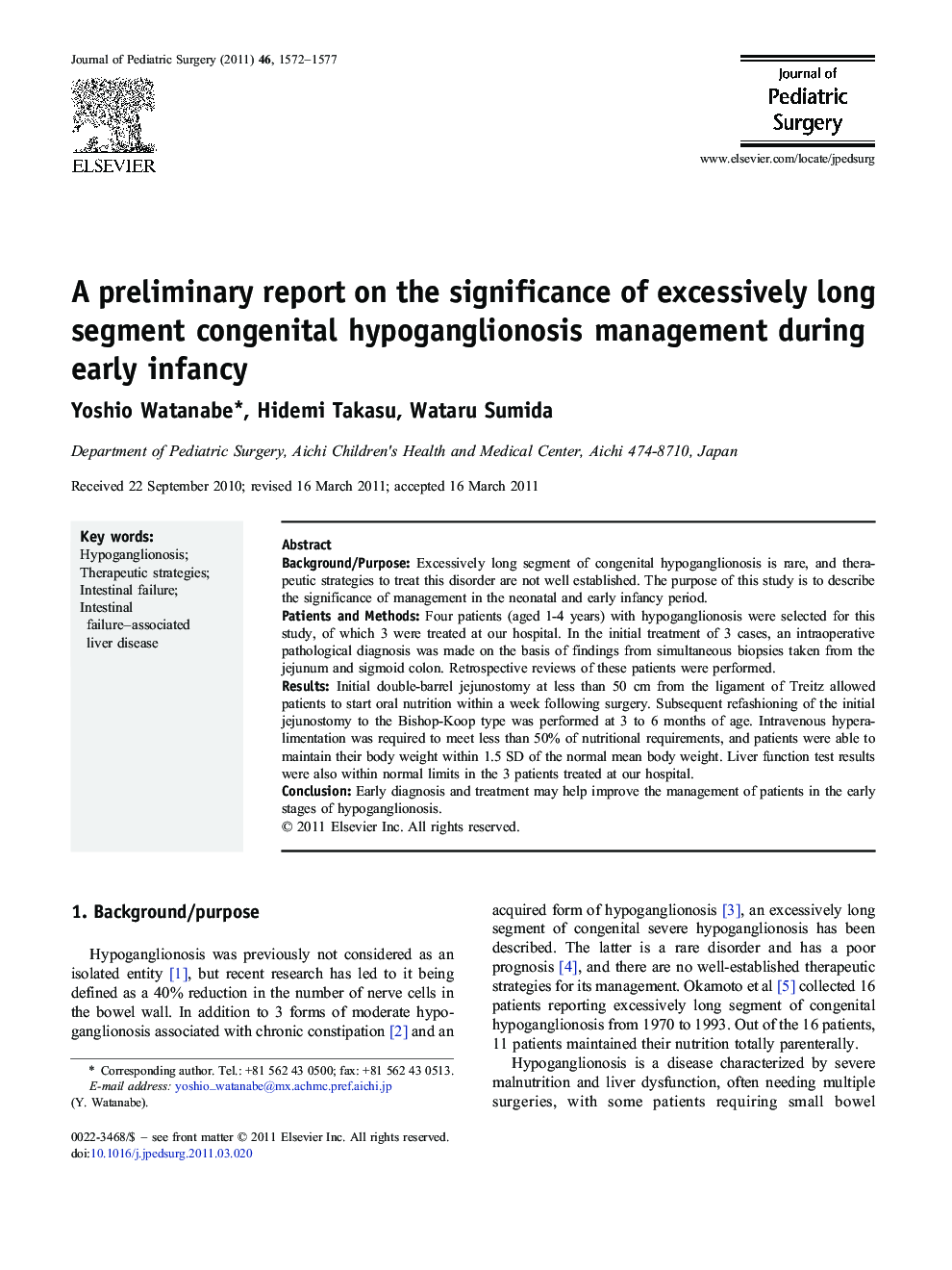| Article ID | Journal | Published Year | Pages | File Type |
|---|---|---|---|---|
| 4156881 | Journal of Pediatric Surgery | 2011 | 6 Pages |
Background/PurposeExcessively long segment of congenital hypoganglionosis is rare, and therapeutic strategies to treat this disorder are not well established. The purpose of this study is to describe the significance of management in the neonatal and early infancy period.Patients and MethodsFour patients (aged 1-4 years) with hypoganglionosis were selected for this study, of which 3 were treated at our hospital. In the initial treatment of 3 cases, an intraoperative pathological diagnosis was made on the basis of findings from simultaneous biopsies taken from the jejunum and sigmoid colon. Retrospective reviews of these patients were performed.ResultsInitial double-barrel jejunostomy at less than 50 cm from the ligament of Treitz allowed patients to start oral nutrition within a week following surgery. Subsequent refashioning of the initial jejunostomy to the Bishop-Koop type was performed at 3 to 6 months of age. Intravenous hyperalimentation was required to meet less than 50% of nutritional requirements, and patients were able to maintain their body weight within 1.5 SD of the normal mean body weight. Liver function test results were also within normal limits in the 3 patients treated at our hospital.ConclusionEarly diagnosis and treatment may help improve the management of patients in the early stages of hypoganglionosis.
